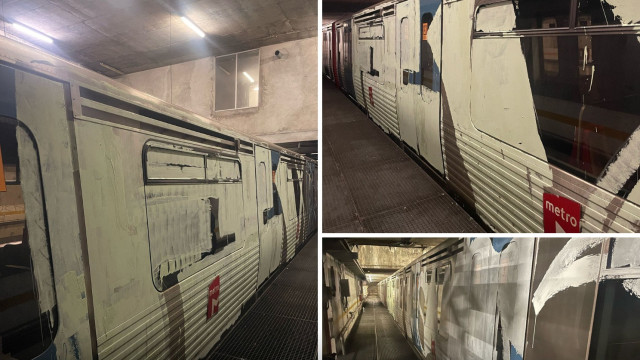A 30-year-old man was arrested early on July 10 after entering a Lisbon Metro station allegedly to “tag trains and certain station areas.”
The arrest took place at 1:05 a.m. after the suspect had “entered the Encarnação station and proceeded through the gallery towards Moscavide station,” detailed the Public Security Police (PSP) in a statement sent to newsrooms this Friday.
Upon approaching the individual, authorities confiscated “a backpack containing seven spray cans, a camera, a video camera, a memory card, and a smartphone.” They suspected “a strong likelihood that his intention was to tag trains and certain station areas.”
The young man was notified to appear at the Lisbon Local Criminal Court – Small Crime Section on Thursday.

This was an action by the Lisbon Metropolitan Command of PSP, through the Public Transport Safety Division, which reinforced maintaining “continuous and rigorous surveillance on the railway and Lisbon Metro public transport networks, aiming to ensure the protection and tranquility of passengers and their goods.”
The Lisbon Metro operates daily with four lines: Yellow (Rato-Odivelas), Green (Telheiras-Cais do Sodré), Blue (Reboleira-Santa Apolónia), and Red (Aeroporto-São Sebastião).
In 2021, the Lisbon Metro cleaned approximately 2,227 square meters of ‘tags’ and other ‘graffiti,’ “unprecedented values in recent years,” found in all public areas of the stations, particularly in interior and exterior access points.
The areas most vandalized were on the Green line, followed by Yellow, Blue, and Red.

The company stated at the time that it had created “a permanent team with appropriate training and equipped with the necessary means,” dedicated “exclusively or primarily” to the removal of these inscriptions, drawings, or signatures on network surfaces.
The organization also noted that Lisbon Metro stations “are considered an underground art gallery and the most visited public art museum in Lisbon,” highlighting that glass etched with ‘graffiti’ made with acidic products was completely damaged and had to be entirely replaced.
“Regrettably, the ‘tags’ or ‘graffiti’ that are usually inscribed at the stations are not a form of art, but rather vandalism of the public space,” it denounced.




